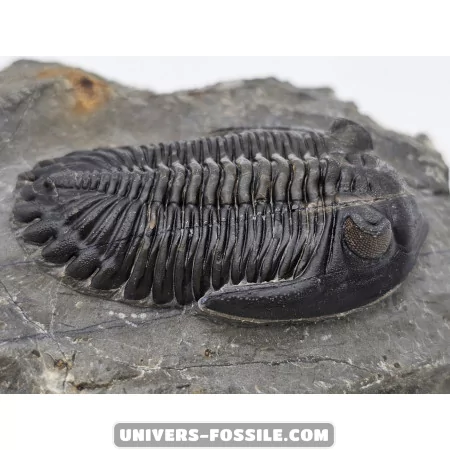Hollardops Trilobites - Explore the Fascinating World of Ancient Marine Life

Hollardops Trilobites
Hollardops trilobites are an extinct species of trilobites, a group of marine arthropods that thrived millions of years ago. These fascinating creatures were among the prominent inhabitants of the Paleozoic oceans, offering paleontologists valuable insights into ancient marine life.
Anatomy of Hollardops Trilobites
Segmented body: Like all trilobites, Hollardops had a body divided into three longitudinal parts - the cephalon (head), the thorax (body), and the pygidium (tail).
Calcified exoskeleton: The outer shell of trilobites was formed of chitin and calcite, providing rigid protection against predators.
Compound eyes: Hollardops trilobites possessed large compound eyes, consisting of many small hexagons, giving them a panoramic view of their environment.
Antennae: Although few fossilized specimens have retained their antennae, it is likely that Hollardops had them to detect environmental stimuli.
Segmented legs: Trilobites used their segmented legs to move along the seafloor, sifting through the sediment in search of food.
Hollardops Trilobites
Discover the fascinating world of Hollardops trilobites, ancient marine creatures that roamed the seas during the Middle to Upper Devonian period, around 390 to 370 million years ago.
Habitat
Hollardops trilobites were prominent predators and prey in the diverse marine ecosystems of their time. Fossils of these intriguing creatures have been unearthed in various locations worldwide, shedding light on their distribution and evolution.
Lifestyle
As benthic animals, Hollardops trilobites scavenged for food in the seafloor substrate, using their segmented appendages to sift through detritus and capture small organisms. Despite their protective exoskeletons, they fell prey to cephalopod mollusks and predatory fish.
Extinction
The tale of Hollardops trilobites, like all trilobite species, eventually led to extinction. However, their legacy lives on through the invaluable insights they offer into the ancient marine world of the Devonian period.
Hollardops Trilobites - Discover the Ancient Wonders
Trilobites are among the most intriguing creatures that once roamed the ancient oceans, with Hollardops being a notable genus known for its unique characteristics. These prehistoric arthropods flourished millions of years ago, showcasing remarkable diversity and adaptability.
Despite their resilience, Hollardops and its fellow trilobites eventually became extinct by the end of the Permian period around 250 million years ago, during the mass extinction event that wiped out most life on Earth. The exact causes of trilobite extinction remain a topic of debate among paleontologists, but it is likely they were influenced by climatic changes, geological events, and evolutionary pressures.
Nevertheless, the legacy of Hollardops trilobites lives on, captivating scientists and paleontology enthusiasts worldwide. Their well-preserved fossils offer invaluable insights into the biodiversity and evolution of ancient oceans, providing a window into the distant past and helping us comprehend the history of life on Earth.
In conclusion, Hollardops trilobites stand as fascinating examples of the rich diversity of ancient marine life. Their fossils are treasured remnants that enable us to journey back in time, unlocking the mysteries of prehistoric oceans and gaining a deeper appreciation for the wonders of evolution.
